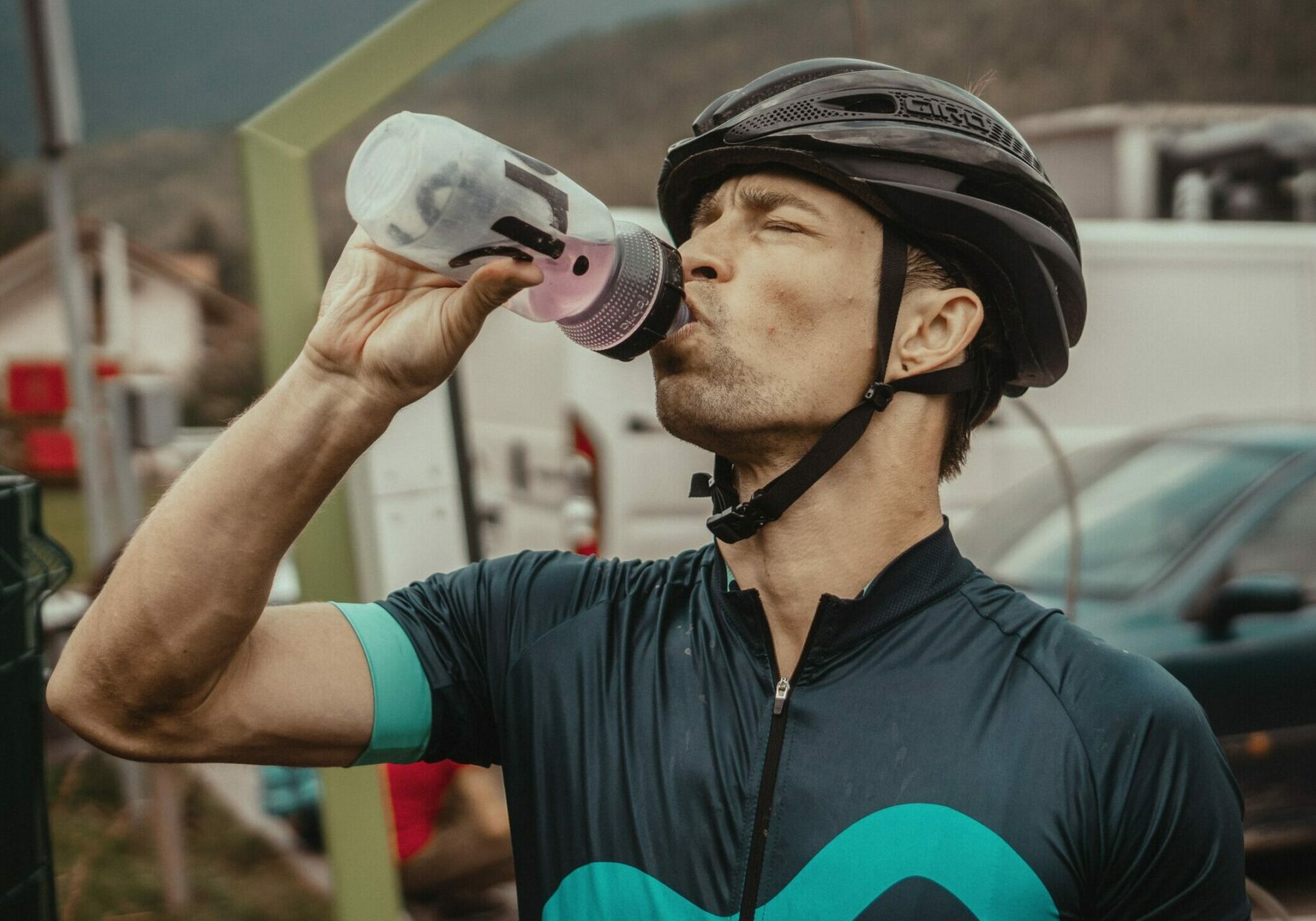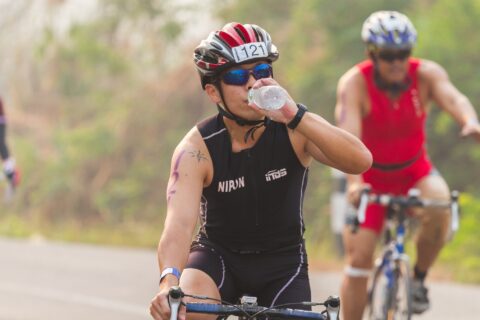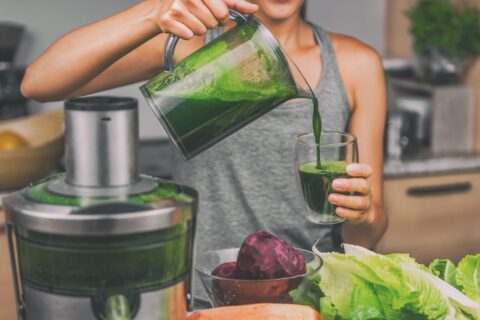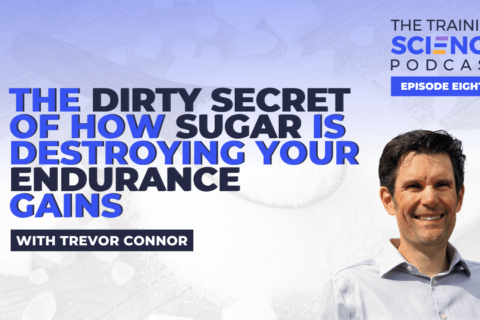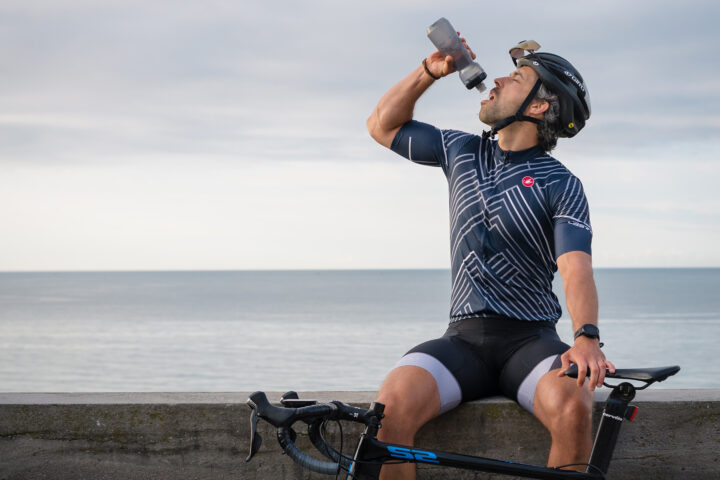Not long ago, a well-known sports drink company, respected for sticking to the science, used a national sports nutrition conference to officially unveil its new “endurance” product. Its customers had spoken, asking for higher sodium and potassium, and the company delivered.
Unfortunately, some of the nation’s top sports dietitians didn’t see it that way. The Q&A session after the presentation was punctuated by comments about “selling out” and “you know better.”
It was not the response the company expected. The product didn’t last long on the market. Why not?
The answer reveals the complex science of hydration.
Explaining the “Law of Entropy”
Hydration is critical to performance. According to Dr. Stacy Sims, the founder and scientist behind Osmo Nutrition, when we dehydrate, our blood volume goes down, our core temperature goes up, our heart rate skyrockets (known as cardiovascular drift), and we can’t perform when it counts.
[For more on cardiovascular drift, listen to Fast Talk, episode 146: Cardiovascular Drift, with Dr. Ed Coyle]
Sodium has a big effect on hydration. (You know the feeling when you eat a salty bag of pretzels without a big glass of water at your side.) So, on a hot day, why wouldn’t we pop salt tablets and pound the electrolyte mixes?
The answer lies in one of the most powerful features of our physiology. Let’s go back to chemistry class. Take a couple jugs; fill one with tap water and one with salt water. Now connect a tube between them so the fluids can mix. Soon enough you’ll have two containers of equally salty water. They’ll blend.
This is a great example of the “Law of Entropy” which Einstein referred to as one of the few absolute truths of science.
And here’s where it gets really cool. Do the same thing with the containers, but now place a filter between the jugs so that water can pass back and forth but the salt can’t. The water will start moving from the tap water container to the salt water container in an attempt to equalize the concentrations of salt.
This concentration of stuff (electrolytes, large particles, sugar, etc.) in water is called osmotic pressure. Water will always flow between containers and compartments in an attempt to equalize osmotic pressure even if it means flowing against gravity. This is why physiologists refer to water as “a follower.”
Our bodies take advantage of this incredibly powerful feature of water. It uses, in particular, sodium and potassium to change osmotic pressures and move water in and out of cells, into sweat, and out of the body.
This is so important to the body that 25 percent of our energy expenditure at rest is spent maintaining our sodium and potassium balance. The osmotic pressure of our blood stays at a nearly constant 280 to 295 mOsm/kg. When it goes above that, we get thirsty. When it drops below, we run for the bathroom.
What this means for your sports drink
What happens when we drink a salty drink? Remember that water, the great follower, always travels from an area of low osmotic pressure to an area of high osmotic pressure.
According to Dr. Sims, if you consume too much sodium with water, the osmotic pressure will increase in your gut and water will flow from your blood to the sodium in the intestinal tract. This is referred to as reverse water flux. The end result is dehydration, bloating, and a bad race.
But sodium is not the only thing that affects osmotic pressure. Sugars do as well, and recent research shows that the sugars in your drink do far more to improve fluid absorption than any quantity of sodium. This area has been a focus of Dr. Sims’ research.
“The type of carbohydrate makes a difference,” Dr. Sims says. “If you are having something that is glucose-sucrose based, that helps with passive glucose sodium transport in the intestine. But if you are using fructose or maltodextrin, which are in your traditional sports drink, it might exit the stomach quickly with low osmolality. So when it gets to the intestine itself, it changes the osmotic pressure, which causes a reverse water flux.”
The lesson here is that it’s important to use sugars our body recognizes. We have built-in transporters for absorbing glucose and fructose, though we are very limited in how much fructose we can absorb. Mixing multiple sugars in our drink allows us to use all of the transporters and absorb the sugars faster. Water will then follow.
In a recent study of the effects of mixed sugars on absorption, a glucose-sucrose mix showed the highest rate of absorption at about 1.25 grams per minute. More importantly, these sugar transporters have to transport sodium with the sugars. This is the main reason a little sodium is needed in your sports drink.
In another recent study, Dr. Sims demonstrated just how important the mix of sugars is. She had 22 cyclists ride while hydrating with a standard commercial energy drink or a lower concentration drink with a glucose-sucrose mix.
Despite ultimately consuming the same calories and an equal amount of sodium, the athletes on the low concentration glucose-sucrose mix, “ended up with a higher power output; cooler skin, which means they are off-loading a lot more heat; and they maintain a higher hydration status at the end of the trial.”
Dr. Sims’ tips for proper hydration
If it’s a hot day and your focus is to stay hydrated, here are a few tips from Dr. Sims.
Avoid over-concentrated drinks
Both sodium and sugars affect osmotic pressure. Drinking a mix with either too much sugar or too much salt can draw water back into the intestines and cause bloating.
Drinks that have a lower osmotic pressure than our blood are best. Most commercial drinks contain a 6-8 percent carbohydrate solution. According to Sims, a 3-4 percent solution is best for fluid absorption. Likewise, we need some sodium, but not a lot.
Use a mix of sugars
“Two sugars are better than one,” Dr. Sims says. “Those two sugars should be [natural] sugars recognized by the body for maximal fluid absorption.”
Avoid the fructose dump
“If you’re using maltodextrin and fructose, you can end up with a ‘fructose dump,’” Dr. Sims says. “Suddenly, your body has so much fructose it can’t titrate it out fast enough through the hepatic portal vein. So it pulls water into the intestine to dilute and hold it.”
What about sodium losses?
“Everyone talks about sodium losses from sweat,” Dr. Sims says. “It’s not a factor of replacing sodium because we have a lot of body sodium stores. We put sodium in a drink to facilitate the glucose-sodium transport in your intestines.” Even if we do lose a lot in sweat, the most we should take per hour, even as a heavy sweater, is one gram per hour, according to Sims.
Salt is not simply sodium
Before adding that extra salt to your drink, remember that salt also contains chloride. “If you take too much sodium chloride, the chloride ion disassociates in the intestine and changes the membrane potential releasing endotoxins,” Dr. Sims says. This has a toxic effect on the body, which hurts performance.
Use potassium in rehydration
“Post exercise, total body rehydration relies on potassium and a little on sodium,” Dr. Sims says. Potassium controls the osmotic pressure inside cells. Cells will dehydrate during exercise to maintain blood volume. To rehydrate them, you need potassium.
Food matters
Taking the perfect balance of sodium, sugars, and water doesn’t matter if you drink it with the wrong foods. “The foods that you eat will contribute to how fluid is absorbed,” Dr. Sims says. “You want to avoid contributing to reverse water flux by not ingesting maltodextrin or fructose.”
Two things to avoid
“If people would change just two things, they would get so much more out of their racing and training,” Dr. Sims says. “The first would be eliminating gels and things that are maltodextrin and fructose based. The second thing would be eliminating sodium chloride tablets.”
Enjoyment is essential
About 10 years ago, a study comparing the then-current sports drinks concluded that the best one was the one you liked most. That’s because you’d drink it. In other words, if research proved that tabasco sauce was the ultimate sports drink, it wouldn’t matter because you wouldn’t drink it. Pick your drink based on the science, but make sure you like the taste.

